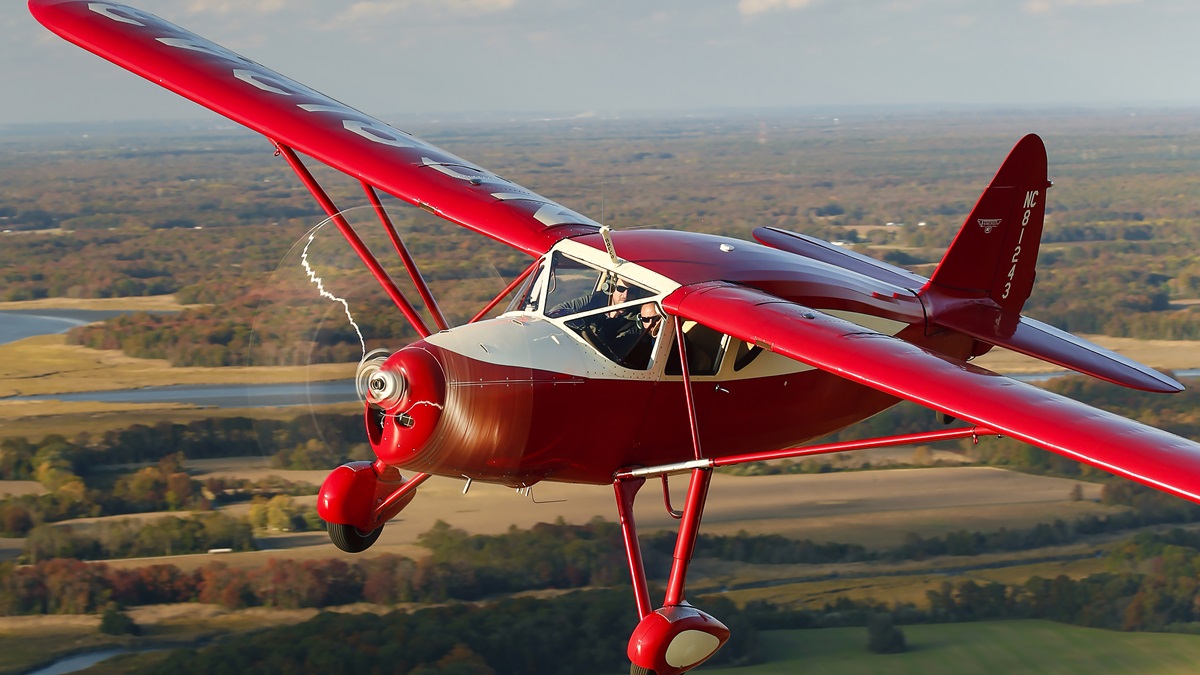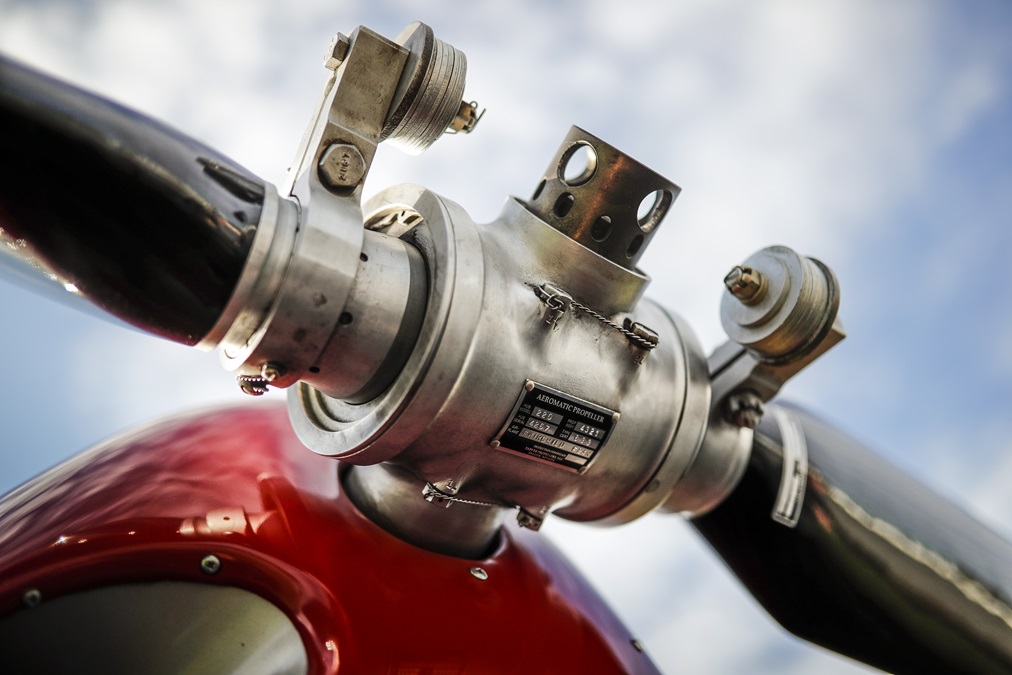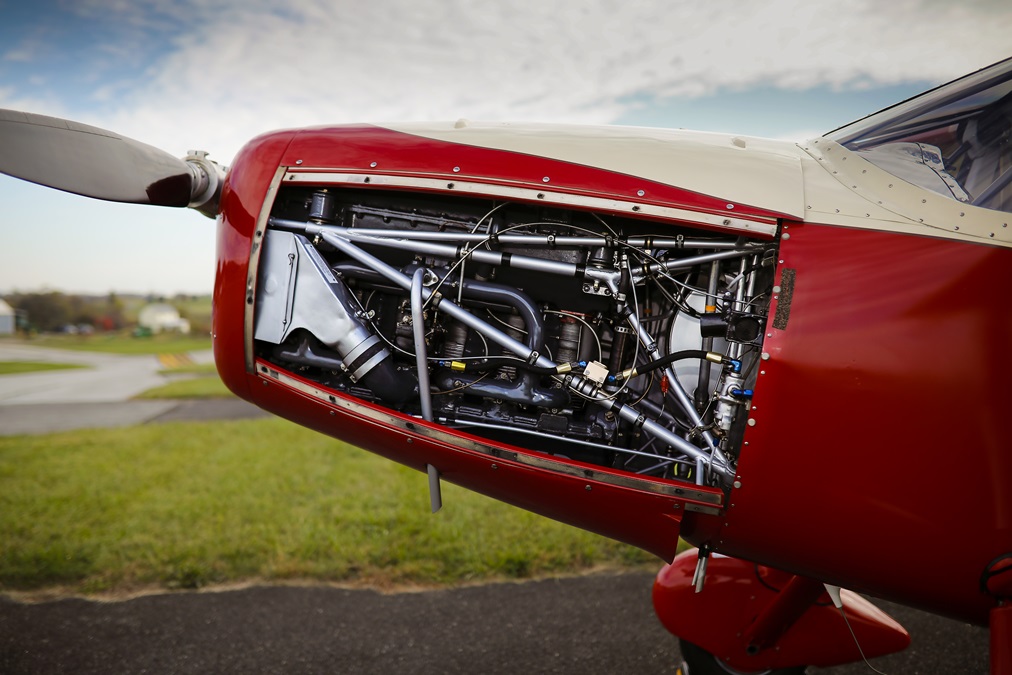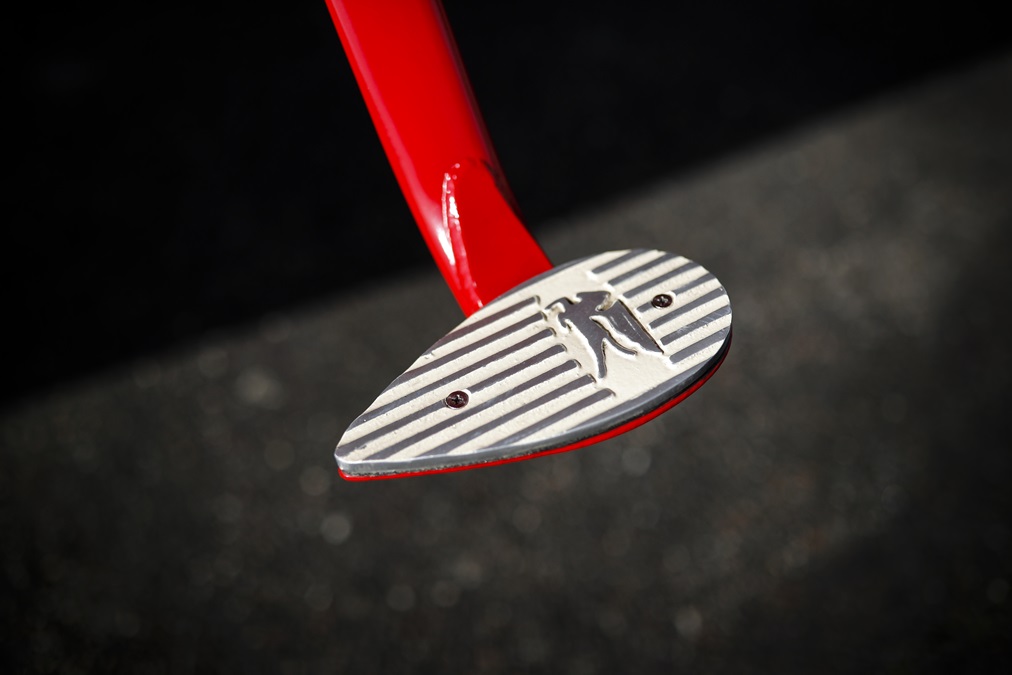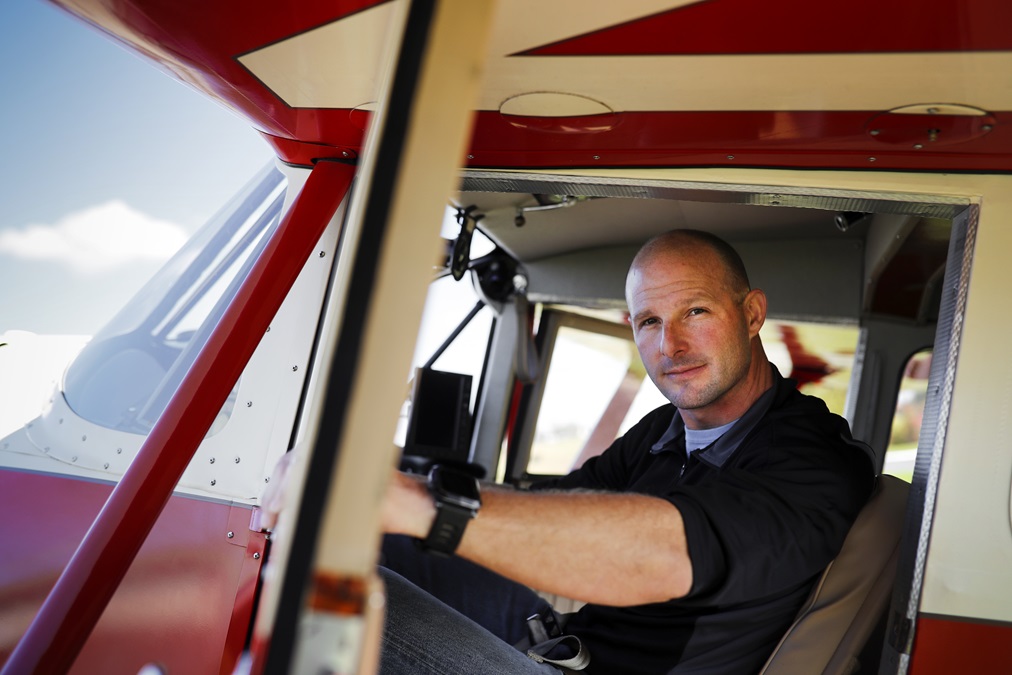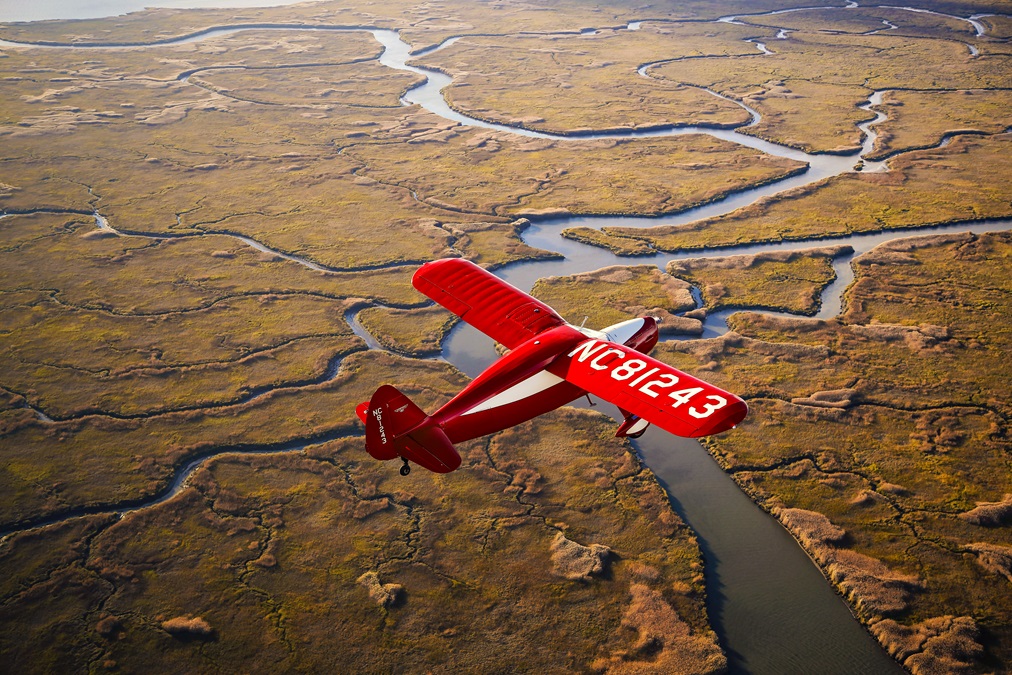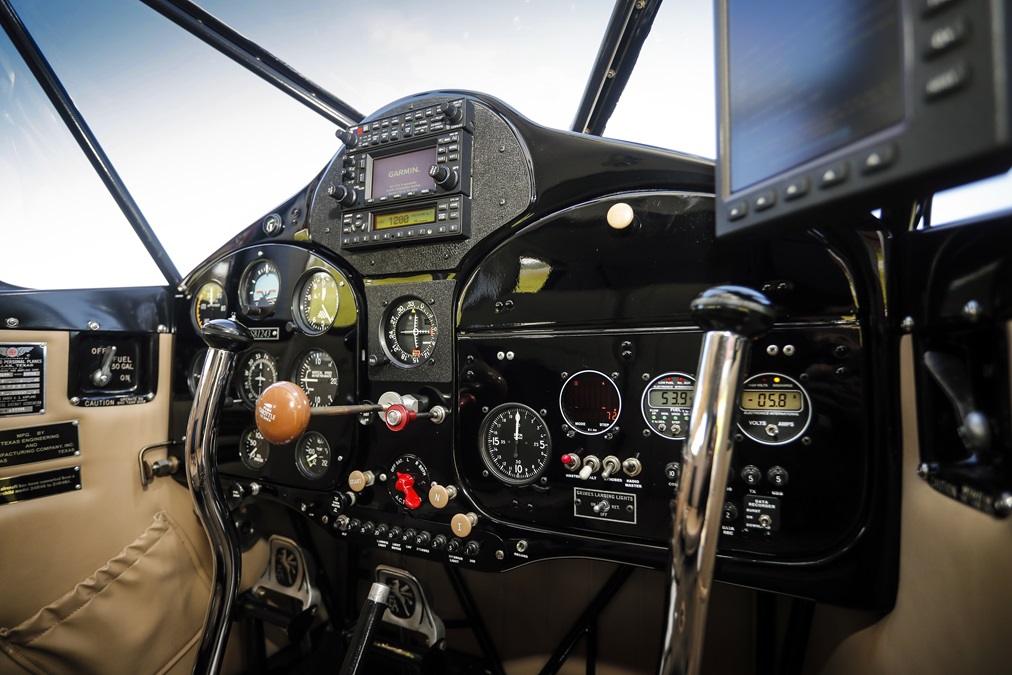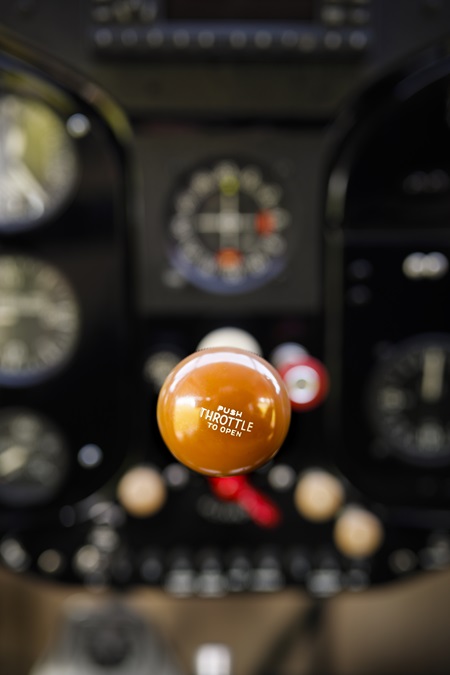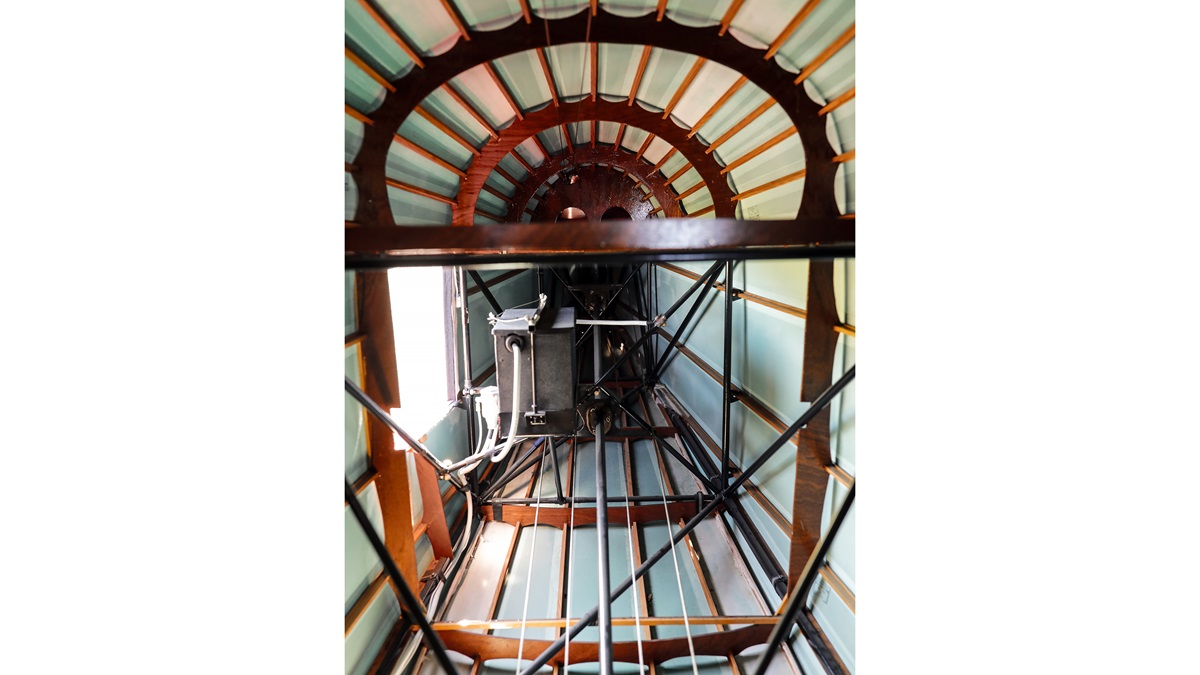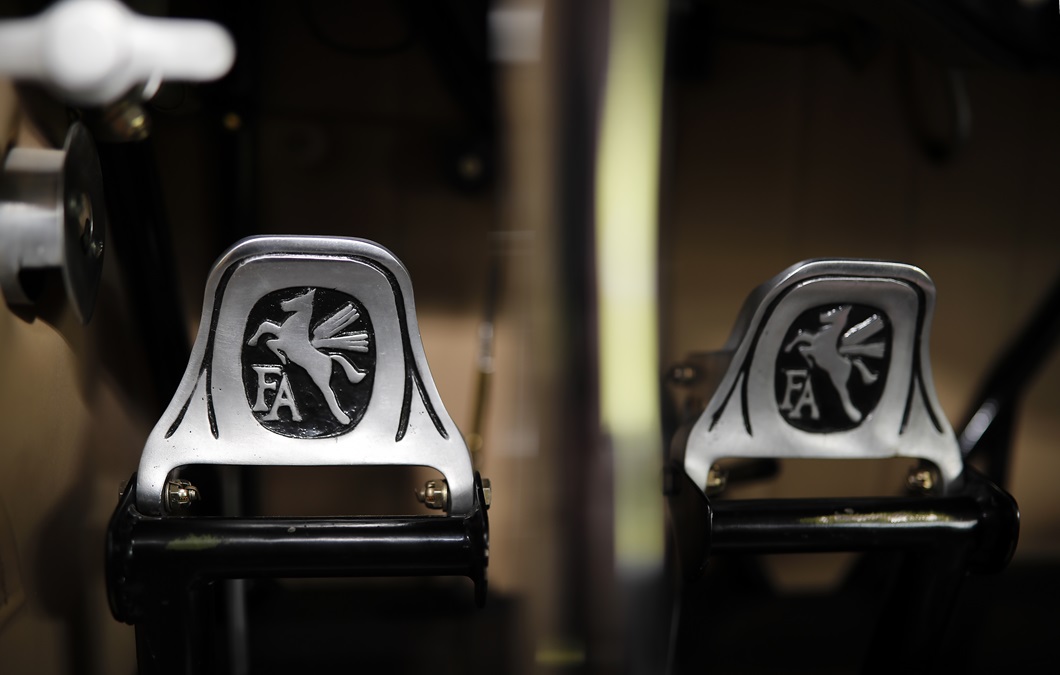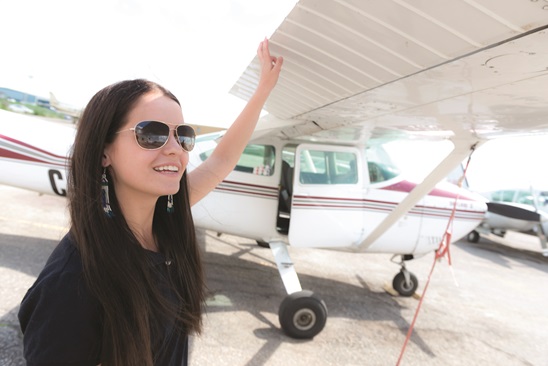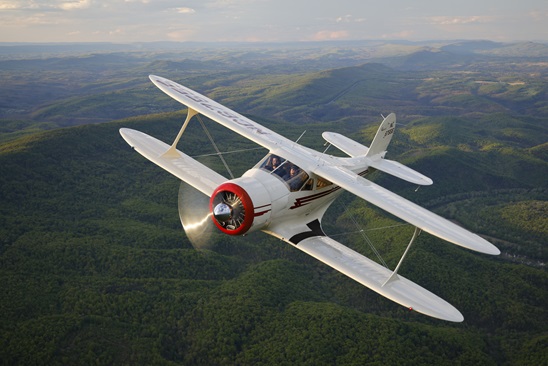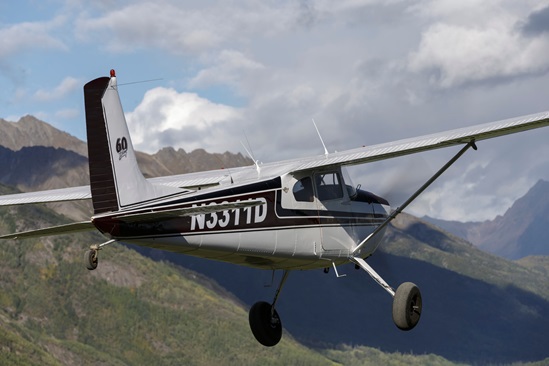Formula 24
An exceptional airplane + beautiful fall weather = a great day of flying
The Fairchild 24 is a statement to an era of thoughtful design and stalwart construction long since passed. Sitting tall and wide on its ungainly landing gear, the Fairchild has an abundance of interesting angles and charming features.
Chief among them is the windows, the key ingredient that makes the Fairchild the perfect airplane for this beautiful day. Unlike most airplanes where the windows pop out or fold open, the Fairchild windows roll down, old-school car-crank style. And given that the big taildragger lazes around at around 100 miles per hour, the windowsill makes a great place to rest an elbow as the sights and smells of the countryside roll by 1,000 feet below.
Project airplane
Jon Martin, the director of New Garden Flying Field—the FAA calls this public facility New Garden Airport—brought this 24 back to life. Martin’s been a staple at New Garden since he showed up at age 12 and asked to learn to fly. Turned away, Martin was undeterred, and at 14 he tried again. That’s when he said Joe Denest, an airport regular who restored Fairchild PT–19s, handed him a piece of sandpaper and told him to get to work. Thus began Martin’s lifelong love of wood, tailwheel airplanes.
As soon as he graduated college, Martin found a Taylorcraft L–2 project and restored it to like-new condition. But a growing family meant he needed four seats, and with the itch to get his hands dirty again he set about finding a new project. “The only requirements I had were tube and fabric, wood, and a stick,” he said. Then one weekend Martin and his wife, Rachael, were at an airshow and saw a Fairchild 24. “What do you think about that?” she asked. The search was on.
Martin found his 24 online from a seller in Florida. He and his dad airlined down, picked up a rental truck, and Martin handed over a check. The seller advertised the project, a 1946 Fairchild, as ready to cover, with a completely overhauled engine. “It was all in boxes,” Martin said. “I had no idea what I was really getting.”
Challenges began as soon as he got home. At more than 60 years old, all the airplane’s glue joints were bad. Martin used the existing wood as a template as he sourced new wood, planed it, and cut new stringers. He spent a year just on the wings, redoing all the old glue joints in the ribs. Although he said about 95 percent of all the necessary parts were in the boxes, many of them had to be refurbished. He sent out the instruments to be overhauled and refaced, added a new alternator to replace the ancient generator, and created a new bulkhead. “Whenever you do a project like this, it’s a history lesson,” Martin said. With few 24s around for reference, he had to source the original drawings to put the puzzle together. Luckily the 24 was used in military service, and the U.S. Department of Defense keeps old drawings. All told, the project was ready to fly in 2011 after 5,000 hours of work.
Martin’s plan the day of the first flight was to take off from New Garden and circle above the airport. The six-cylinder, inline 200-horsepower Ranger engine pulled the 24 strongly up and, with much relief, Martin’s 20-minute test flight was uneventful. Or so he thought. Like many engines of its day, and those with cylinders mounted upside down, the Ranger tends to burn some oil. A quart per hour isn’t unusual. But when Martin landed he discovered only one gallon of four remaining in the oil tank. Three gallons of oil had been sacrificed to the airplane’s belly and the Pennsylvania countryside.
Although the engine had been advertised as overhauled, improperly bored bearings caused an excessive gap between the crankshaft main journals, causing the oil to blow out the breather tube. Martin’s overhauled engine needed an overhaul. He enlisted mentor Denest, and Denest’s son Mark, to help tear down the engine and rebuild it. Ever the optimist, Martin said that although it was unfortunate to have to do the work on an engine with no time since a major overhaul, “The education I received from Joe was incredible, and I cherish the time spent on learning about this wonderful engine.”
With the engine back together, and from the same airport where he first showed up decades before as a young kid, Martin again hurtled the 24 down the runway and launched on a flawless test flight.
First impressions
When we first see the 24, Martin has already pulled it out of the hangar and perched it on a pad near the runway. Like a red-and-white beacon, it welcomes us to scenic New Garden Flying Field, an airport built by the DuPont family for their own enjoyment, and later sold to the town. At most airports the 24 would be an anomaly, but here it’s not the only wood-and-fabric airplane. It’s not even the only Fairchild. There are a PT–19 and PT–26, and each hangs around in part because of Denest’s expert work.
The 24 gives a great first impression. It has that “it” factor of great ramp presence, in part because of its size. With a roomy cabin; big, broad landing gear; and a long, fat wing, the 24 is significantly bigger than many light airplanes of its day. The airplane is also undeniably beautiful from almost every angle (avoid the head-on photograph). Sweeping lines grace the fuselage and wings. The long, distinctive cowl is built to accommodate the unique Ranger engine, a Fairchild design. And although the Fairchild can’t really be classified as having gull wings, the way in which the wing joins the fuselage gives it that essence.
The real payoff is the cockpit. Necessary elements could have been left as utility pieces, but the designers clearly took pride in offering a pleasant experience. The entry step, for example, is a beautiful teardrop shape with a Pegasus in the step plate. Getting in the back is made easier because the front seats pivot forward, the rear legs folding up as they do. Because he knew he’d be flying his family often, Martin has made the panel a mix of true-to-history and modern. A Garmin GNS 430 provides communication, navigation—and perhaps most important, traffic. The 24 might be a beautiful airplane, but visibility out of the cockpit isn’t its strength.
Martin also added a fuel totalizer to keep track of the wing’s 60 gallons, and an engine analyzer to baby his investment. Much of the rest of the panel is like a great photograph, an invitation to study its subtle details. The tachometer, for example, calls out hundreds of rpms like a clock counts minutes. The magneto switch is a prominent red knob in the center of the panel. There’s a glove box to carry the pilot’s flying gloves. Throttle is controlled with a fat knob that fills the whole palm. Trim is controlled with an overhead crank, and takeoff is marked not by some rigid line, but a kindly range. And true to Martin’s requirements list, two sticks stand up tall in front of the panel, each with an elongated bulb on the top. Then there are those windows, with true automotive-style cranks that beg to be tested.
Despite the convenient lift-up seats and big step, getting in is a challenge. It’s made easier by abundant headroom. Grab the handle from the front-seat sidepost, put the outside leg on the step, and swing the inside leg in and beyond the stick. Continue the hoist by ducking through the door, and you’ve pretty much made it. The rudder pedals sit closer to the seats than seems reasonable, so even after successfully sitting down, your knees come up uncomfortably high. Long torsos and shorter legs will have the best fit.
The airplane feels too genteel for checklists, and it’s so simple that a flow suffices for starting. After a quick fuel drain from the cockpit, Martin turns on the left magneto (it’s the only one with an impulse coupling) and pulls the starter cable. The propeller swings through half a stroke and stops. Another pull and the engine catches without drama. A small puff of white smoke drifts out the right side. “Upside-down engine,” Martin says.
The Ranger engine hums quietly at low rpm, and there’s no teeth-chattering shaking. Fairchild sold the 24 with either a Ranger, available in a few different horsepower variants, or a Warner radial engine. Martin wasn’t particularly enamored with the radial, and he said the Ranger has better parts availability. Ultimately, he said, “I didn’t choose the Ranger, it chose me.” Because he found both a project that included a Ranger and because he had experience working on one and access to local knowledge, the inline made sense. Like any good owner of a historic aircraft, however, Martin hedged his bets; there are a few extra engines scattered around the airport in case he needs them.
For pilots used to a Lycoming or Continental engine, the Ranger provides a much different experience. By their nature, horizontally opposed cylinders shake the airplane back and forth as they do their work. But, as Martin says, the Ranger hums like a Singer sewing machine.
Despite the long nose, visibility from the cockpit is decent on the ground. And the airplane’s heft doesn’t seem to matter to the 200 horses working away on takeoff. We could get into a discussion about specifications here, but let’s just say the airplane performs well enough. Any Fairchild flight should start with the objective of enjoying the ride, so things such as speed and short takeoff and landing capabilities are less important. The 24 doesn’t shoot into the air, and it’s not fast. The stick provides good feedback in roll, and is a little soft in pitch. Overcontrolling yaw seems like it would only be possible for a bodybuilder. The pedals—and the rest of the airplane, for that matter—have lots of inertia. Press really hard and they unstick from center, and stay put. Muscle the stick over in a bank and it stays there. It’s a stable flier.
On approach the split flaps deploy with a big manual handle between the front seats, and the quirkiness of the airplane is displayed again as each setting renders a different harmonic through the airframe. Or maybe it’s because the window is open and the flaps are right next to your head. Either way, it induces a smile.
Martin doesn’t have any hard rules for landing the 24, choosing a wheel landing or three-point as conditions dictate. Today he decides a wheel landing is in order, and the oleo strut gives a great arrival with no spring back.
Too soon it’s time to taxi in, swing the tail into the parking spot, and pull the mixture. Martin has put 200 hours on the 24 since that first flight, and clearly he still loves every minute. He’s smiling, happy to be flying something he brought back to life, on a beautiful fall day at the airport he’s loved since he was a kid. His son is 11 and has already shown an interest in learning to fly; Martin put a piece of sandpaper in his hand and told him to get to work.
Email [email protected]
